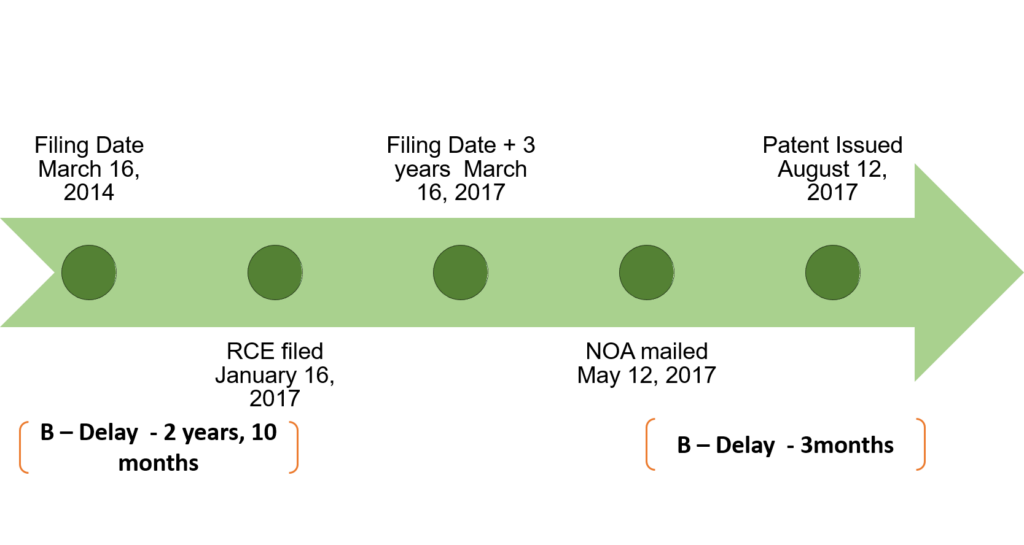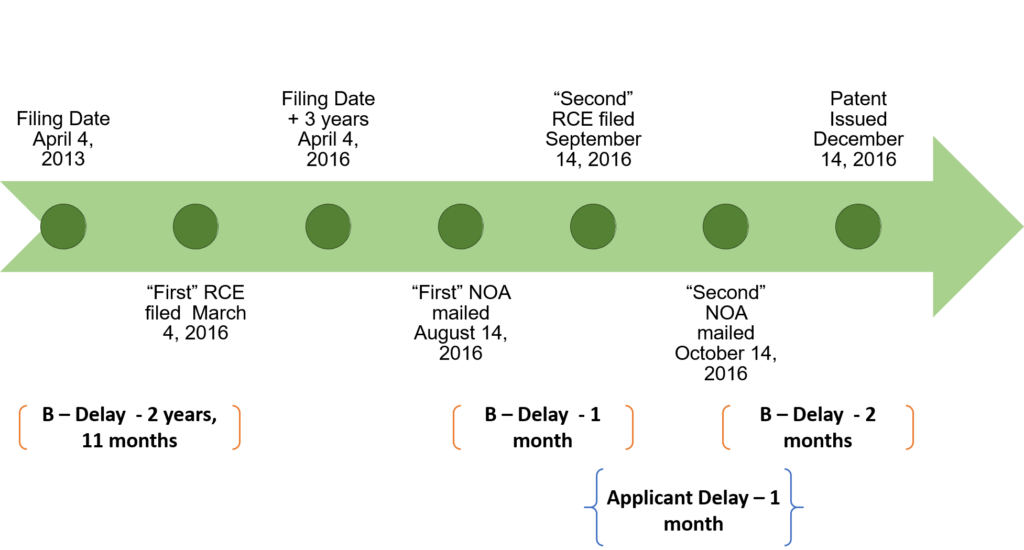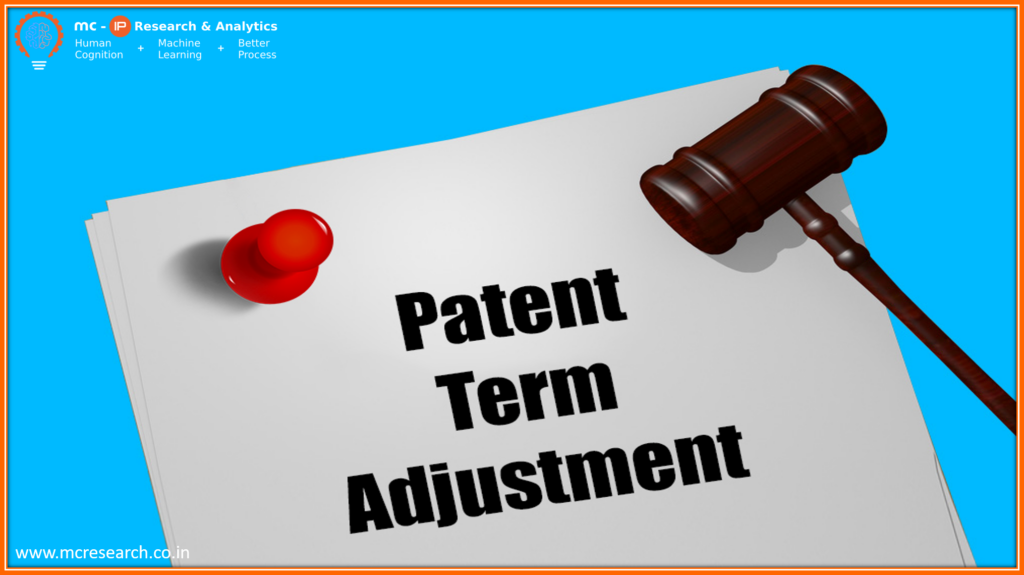Patent Term Adjustment (PTA)
Patent Term Adjustment (PTA) can be granted to an issued patent to extend the life of the patent beyond the statutory term of 20 years from the earliest filing date. PTA is granted to compensate the applicant for patent term loss due to administrative delays incurred during prosecution before the United States Patent and Trademark Office (USPTO).
Purpose of PTA
PTA was established by the American Inventors Protection Act of 1999 and codified at 35 U.S.C. § 154(b) as a way to balance unreasonable delays caused by the USPTO and Applicants during examination of a non-provisional patent application such that, if warranted, an Applicant could gain additional patent term (i.e., effective patent term could be extended past 20 years from an application’s earliest effective filing date.)
What problem/purpose it solves?
- It could reduce the loss of patent life term i.e., 20 years from filing
- Gives the patentee additional patent term if the USPTO takes too long to process the application
- Provides three (3) bases for adjustment under 35 U.S.C. § 154(b)(1):
- USPTO failure to take certain actions within specified time frames “A” delay
- USPTO failure to issue a patent within three years of the filing date under 111(a) or commencement date “B” delay
- Delays due to interference, secrecy order, or successful appellate review “C” delay
PTA provides day-to-day adjustment for each failure or delay resulting in adjustment
DELAYS
A-delay (35 USC §154(b)(1)(A))
This outlines the timeline for potential delays attributable to the PTO (Patent and Trademark Office), both from the Examiner and the Issuing Office, during patent prosecution. It can be easily recalled as the “14-4-4-4 rule,” which consists of several key milestones:
- The first Office Action should occur within 14 months of the application filing date.
- The PTO (Examiner) should respond within 4 months of the Applicant’s response date.
- In case of an Appeal, the PTO (Examiner) should respond within 4 months of the filing of the Applicant’s reply brief.
- The PTO (Issuing Office) should issue the patent within 4 months of the payment of Issue fees.
Failure to meet these deadlines may result in accrued delays for every day beyond the specified dates.
B-delay (35 USC §154(b)(1)(B))
This addresses the responsibility of the PTO to finalize patent prosecution within three years of filing, with delays accruing for each day beyond this timeframe. However, certain “exceptions” to what is known as B-delay exist, and the time taken for these exceptions during the prosecution stage isn’t factored into B-delay calculations. These exceptions include Request for Continued Examination (RCE), interference, derivation proceedings, secrecy orders, and review by the Patent Trial and Appeal Board (PTAB) or court.
It’s important to note that filing an RCE is deemed an applicant’s delay and not an exception to B-delay if done after the Notice of Allowance (NOA).
C-delay (35 USC §154(b)(1)(C))
This addresses delays classified as B-exceptions, such as those stemming from interference or derivative proceedings, secrecy orders, and patent appeals at the PTAB. These delays are accounted for only if they result favourably for the applicant. This mechanism serves to mitigate the impact of B-exception delays, but only when the appeal, for instance, yields a successful outcome. An appeal is considered successful if at least one rejected claim is overturned in favour of the applicant.
Notably, the time taken by an RCE is not factored into this calculation. Consequently, the time consumed during the prosecution stage may still contribute to PTA depending on the outcome of these proceedings.
Applicant’s delay (35 USC §154(b)(2)(C) & 37 CFR 1.704)
When PTA (Patent Term Adjustment) is granted for delays attributed to the PTOs responsibility, it is also expected that the applicant cooperates to ensure timely conclusion of the patent prosecution stage. Failure to engage in reasonable efforts to conclude prosecution can result in accrued delay for the applicant. Applicant delay can stem from various factors, with the most common being failure to respond to the Office Action within three months.
Overlap delay (35 U.S.C. § 154(b)(2)(A))
Overlapping delays between A & B / A & C. If there’s any overlap between two or more similar delays (such as A, B, or C), only one will be credited, ensuring no double benefit from the same duration of accrued delay.
PTA Math:
PTA = (Days of PTO Delay) – (Days of Applicant Delay)
PTO Delay = (“A” + “B” +”C” delays) – (Overlapping delays)
But, if the applicant delays the prosecution, then that delay is subtracted from the PTA (however, the total PTA is always non-negative, i.e. >=0)
Example
- Non-overlap A & B delay calculation

PTA = 608 + 122 + 0 – 0 – 181 = 547 days
- Overlap A & B delay calculation

PTA = 306 + 304 + 0 – 62 – 0 = 548 days
- C-delay calculation

PTA = 608 + 154 + 120 – 0 – 0 = 882 days
PTO RULES FOR PTA 35 U.S.C 154
- 37 CFR 1.703 – USPTO delays
- 37 CFR 1.704 – Applicant delays
- 37 CFR 1.705b – Request for reconsideration of any patent term adjustment (should be file no later than 2 months form patent grant 2 months can be extended up to 5 months under 1.136)
RCE – Request for Continued Examination
- B-delay (3-year rule) – failure to issue a patent within 3 years from application filing
- A patent application does not earn a “B” delay from the time an RCE is filed until a Notice of Allowance is issued, unless the USPTO actually resumes examination of the application after allowance.
- The submission of an RCE after a Notice of Allowance has been mailed will constitute a failure to engage in reasonable efforts to conclude examination, thereby resulting in Applicant delay.
Example : B delay = 1 month

Example: B delay = 3 Months; Applicant Delay = 1 Month

Terminal Disclaimers – TD
- An applicant may file a terminal disclaimer to overcome a non-statutory double patenting rejection
- The standard USPTO terminal disclaimer form states that the disclaimed patent will not extend beyond the term of the prior patent.
- PTA cannot be used to extend the term of a patent beyond the expiration date set in a field (and approved) terminal disclaimer.
TD – Example
Example:
- Patent A is filed on January 1, 2000
- Patent B is a continuation of Patent A
- Terminal Disclaimer filed in Patent B over Patent A

Petition for PTA Correction
If a patent holder is dissatisfied with the PTA automatically determined by the USPTO, they can file a petition for reconsideration within two months from the patent’s issuance date. This deadline is extendable by up to five months upon payment of the relevant extension fees.
Why MCRPL?
As patent term adjustments hold particular significance for applicants in all the fields especially life science applicants. At MCRPL, we provide a Patent Term Adjustment (PTA) service designed to streamline and extend the duration of a U.S. patent. Customized to mitigate delays encountered during patent application prosecution by the U.S. Patent and Trademark Office (USPTO), this service presents a strategic opportunity for patent holders.
Further, we will closely monitor how the USPTO handles inconsistencies in notifying applicants regarding the examination status of follow-on applications, particularly when a prior notification indicated that the priority application was ready for examination.
© Molecular Connections Private Limited
For more information, contact priorart@molecularconnections.com
For more updates subscribe IP Tech Insider
Also, you can place an order for your search on our online portal: https://ipsolutionshub.com/






